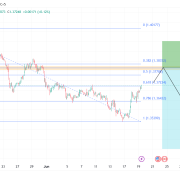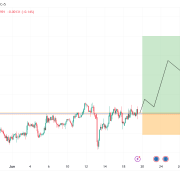
Hilltop Holdings Inc . (NYSE:HTH) has reported a mixed set of financial results for the third quarter of 2024 during its earnings conference call. The company announced a net income of approximately $30 million, or $0.46 per diluted share. PlainsCapital Bank, a significant contributor to the company’s earnings, reported a pre-tax income of $48 million on $12.8 billion in average assets, despite a noticeable decline in average loans. PrimeLending, on the other hand, faced a pre-tax loss due to a drop in origination volume and a valuation adjustment. Hilltop Securities generated $17 million in pre-tax income on $124 million in net revenues. The company has maintained a strong capital position and returned $11 million to shareholders in dividends. Looking forward, Hilltop Holdings remains committed to prudent growth and improving efficiencies in a challenging market environment.
Key Takeaways
Hilltop Holdings reported a net income of $30 million, with earnings per diluted share of $0.46.
PlainsCapital Bank contributed $48 million in pre-tax income, despite a $40 million decline in average loans.
PrimeLending faced a pre-tax loss of $8.7 million, influenced by lower origination volume and an MSR asset adjustment.
Hilltop Securities earned $17 million in pre-tax income on $124 million in net revenues.
The company’s common equity Tier 1 capital ratio was strong at 20.5%.
Total deposits decreased by 7% year-over-year, with a significant drop in broker-dealer sweep deposits.
Non-interest income was $200 million, with a decline in mortgage revenues.
Non-interest expenses increased slightly due to higher variable compensation.
The company is focused on achieving a more neutral asset sensitivity and managing interest-bearing deposit costs effectively.
Company Outlook
There is optimism for improved mortgage origination volumes in 2025.
Management is focused on prudent growth amidst a competitive environment.
The company anticipates ongoing market uncertainty regarding interest rates and inflation.
Leadership remains committed to growth and efficiency improvements.
Bearish Highlights
A $40 million decline in average loans at PlainsCapital Bank due to elevated payoffs.
PrimeLending reported a pre-tax loss influenced by a significant drop in origination volume.
Total deposits declined by 7% year-over-year.
Non-interest income decreased, with mortgage revenues impacted by market challenges.
Bullish Highlights
PlainsCapital Bank still managed to contribute significantly to pre-tax income.
Hilltop Securities generated solid pre-tax income.
Signs of stabilization in the mortgage segment, with expectations of gradual improvement.
Non-performing assets and net charge-offs decreased, indicating improved loan quality.
Misses
The bank’s net interest margin experienced a slight compression to 3.05%.
Interest-bearing deposit costs increased slightly to 262 basis points.
Q&A Highlights
The company aims to reduce overnight cash balances from $1 billion to $2 billion to the target range of $300 million to $750 million.
Funds will be reallocated into securities and retained mortgages for better positioning.
Loan growth is expected primarily from commercial real estate, with improved pipelines despite economic caution.
Full-year guidance will be provided in January.
InvestingPro Insights
Hilltop Holdings Inc. (HTH) presents a nuanced financial picture, as reflected in both its recent earnings report and additional data from InvestingPro. The company’s market capitalization stands at $1.97 billion, indicating its mid-cap status in the financial sector.
Despite the challenges highlighted in the earnings call, HTH maintains a P/E ratio of 17.34, suggesting that investors are still willing to pay a premium for the company’s earnings. This valuation is particularly interesting given that HTH is trading at a high P/E ratio relative to its near-term earnings growth, as noted in one of the InvestingPro Tips. This could indicate that the market is pricing in future growth potential or other factors beyond current earnings.
The company’s dividend policy stands out as a bright spot. An InvestingPro Tip reveals that HTH has raised its dividend for 8 consecutive years, demonstrating a commitment to shareholder returns even in challenging times. This is further supported by the current dividend yield of 2.23%, which may be attractive to income-focused investors.
However, investors should note that HTH suffers from weak gross profit margins, according to another InvestingPro Tip. This aligns with the company’s reported challenges in certain segments, such as PrimeLending’s pre-tax loss and the overall decline in non-interest income.
On a positive note, HTH has been profitable over the last twelve months, with a basic EPS of $1.75. This profitability, combined with the company’s dividend track record, may provide some reassurance to investors despite the current headwinds.
For those interested in a deeper dive into HTH’s financial health and prospects, InvestingPro offers 7 additional tips that could provide valuable insights for investment decisions.
Full transcript – Hilltop Holdings Inc (HTH) Q3 2024:
Operator: Good day everyone and welcome to today’s Hilltop Holdings Third Quarter 2024 Earnings Conference Call and Webcast. At this time, all participants are in a listen-only mode. Later, you will have the opportunity to ask questions during the question-and-answer session. [Operator Instructions] Please note this call is being recorded. I will be standing by if you should need any assistance. It is now my pleasure to turn the conference over to Matt Dunn.
Matt Dunn: Thank you. Before we get started, please note that certain statements during today’s presentation that are not statements of historical fact, including statements concerning such items as our outlook, business strategy, future plans, financial condition, credit risks and trends in credit, allowance for credit losses, liquidity and sources of funding, funding cost, dividends, and impacts of interest rate changes, as well as such other items referenced in the preface of our presentation are forward-looking statements. These statements are based on management’s current expectations concerning future events that, by their nature, are subject to risks and uncertainties. Our actual results, capital, liquidity, and financial condition may differ materially from these statements due to a variety of factors, including the precautionary statements referenced in the preface of our presentation and those included in our most recent annual and quarterly reports filed with the SEC. Please note that the information presented is preliminary and based upon data available at this time. Except to the extent required by law, we expressly disclaim any obligation to update earlier statements as a result of new information. Additionally, this presentation includes certain non-GAAP measures, including tangible common equity and tangible book value per share. A reconciliation of these measures to the nearest GAAP measure may be found in the appendix to this presentation, which is posted on our website at ir.hilltop.com. I will now turn the presentation over to Hilltop President and CEO, Jeremy Ford (NYSE:F).
Jeremy Ford: Thank you, Matt, and good morning. For the third quarter, Hilltop reported net income of approximately $30 million, or $0.46 per diluted share. Return on average assets for the period was 0.8% and return on average equity was 5.5%. Favorable operating results from the banking and broker dealer business units helped to produce a quarter-over-quarter increase in pre-provision net revenue and net income. While maintaining the balance between our consolidated earnings profile and strong liquidity position, Hilltop realized a quarter-over-quarter improvement in net interest income primarily due to a growth in average earning assets though consolidated net interest margin at Hilltop and net interest margin at the bank did experience modest compression in the quarter. We will comment further on the bank’s NIM later in our prepared remarks. During the quarter, PlainsCapital Bank generated $48 million of pre-tax income on $12.8 billion of average assets, representing a return on average assets of 1.14%. Average loans at the bank declined by $40 million in the quarter primarily due to elevated levels of loan payoffs and a lower pull-through rate on the bank’s loan pipeline from heightened competition across our footprint. However, as borrowers expectations of declining interest rates grew, the bank saw an increase in client activity throughout the quarter and a corresponding growth in our loan pipeline. We expect it will take several quarters for increased borrower activity to materialize into an increase in funded loans held for investment. Our average deposit balance increased by 1% during the quarter, which was driven by an increase in core interest-bearing deposits for the third straight quarter. This growth was partially offset by a modest decline in noninterest-bearing deposits. Results in the quarter at PlainsCapital Bank included a reversal of credit losses of $1.4 million. This recapture primarily due to positive credit migration in the loan portfolio and an improvement in collective economic conditions though partially offset by changes in specific reserves. Will is going to provide further commentary on credit in his prepared remarks. The bank realized a 5 basis point compression in net interest margin from the second quarter to 3.05%. This change was primarily attributable to an increase in the cost of interest-bearing deposits and a mix shift in average earning assets. Overall, the bank continues to perform well and has prudently managed liquidity and funding over the past handful of volatile quarters. We remain dedicated to responsibly growing our high quality relationship based core loan portfolio as we move into an anticipated declining interest rate environment. Moving to PrimeLending where the company reported a pre-tax loss of $8.7 million during the quarter. The quarter-over-quarter decline in operating results was driven by a reduction in origination volume of $72 million and a decline in the gain on sale margin of 4 basis points to 224 basis points. Further, the trend of downward pressure on loan origination fees as a percentage of origination volume continued through the third quarter. Additionally, PrimeLending recognized valuation adjustment related to the MSR asset of $4.2 million during the third quarter, which negatively impacted its financial results. While there is increased optimism regarding industry-wide mortgage origination volumes for 2025, we believe the coming quarters will remain a challenging operating environment for PrimeLending as the business moves into the seasonally slower fourth and first quarters of the calendar year. In the third quarter, Hilltop Securities generated pre-tax income of $17 million on net revenues of $124 million for a pre-tax margin of 14%, speaking to the business lines at Hilltop Securities. Public finance services produced flat net revenues compared to the third quarter last year as municipal advisory fees increased by 4% on strong offering volumes. Structured finance net revenues increased by $4.4 million from the third quarter 2023. This year-over-year improvement was driven by expanded availability within down payment assistance programs from select state housing clients, which resulted in strong TBA lock volumes and further by elevated buy side demand for call-protected collateral. In wealth management, net revenues declined by $2.1 million compared to last year’s third quarter as balances in our FDIC sweep program continued to subside. The decline in sweep revenue was partially offset by an increase in investment in securities advisory fees within wealth management. Finally, while our fixed income business remains pressured due to challenging market conditions, the business unit did produce an increase in net revenues year-over-year of $3.1 million. Overall, Hilltop Securities had continued positive performance in public finance and a strong quarter from both the structured finance and wealth management business lines. The broker dealer generated a year-over-year increase in net revenues and a low teens pre-tax margin, which reflects the firm’s ability to perform well in a variety of rate environments and market conditions. Moving to Page 4. Hilltop maintains robust capital levels with a common equity Tier 1 capital ratio of 20.5%. Additionally, our tangible book value per share increased from year-end 2023 by $0.94 to $29.29. During the period, we returned $11 million to shareholders through dividends. Thank you. And now I will turn the presentation over to Will to discuss our financials in more detail.
Will Furr: Thank you, Jeremy. I’ll start on Page 5. As Jeremy noted, for the third quarter of 2024, Hilltop reported consolidated income attributable to common stockholders of $29.7 million, equating to $0.46 per diluted share. The quarter’s results included the impact of a $4.2 million valuation adjustment related to the signing of an LOI fell approximately $43 million of the remaining MSR assets at PrimeLending, largely offsetting the MSR charge for gains and positive valuation adjustments in our merchant banking unit, Hilltop Opportunity Partners, lower healthcare related costs during the period and a modest reduction in the allowance for credit losses. To discuss the allowance in more detail, I am moving to Page 6. Hilltop’s allowance for credit losses declined during the quarter by $4 million to $111 million. As is noted in the graph, specific reserves increased in the period by $1.2 million impacted by the ongoing evaluation and related adjustments for the two large auto lending credits we discussed last quarter and various small adjustments to other specifically reserved credits. For additional reference materials regarding our auto lending portfolio, we provided a slide on Page 21 of this presentation that outlines the size of this portfolio, including recent trends and the allowance coverage maintained on this portfolio as of September 30. Offsetting the additions to the specific reserves were positive migrations in the collectively assessed portfolio which reduced the allowance for credit losses by $2.2 million. This reflects the modest improvement of certain clients’ cash flow and operating results. Lastly, during the third quarter, management decided it was appropriate to move away from the Moody’s S7 scenario and move to the Moody’s S5 scenario, which provides for slow economic growth into the future and does not include an immediate recession. Further, the S5 scenario more closely aligns to management’s views on the trajectory of interest rates in the future. Of note, the impact of change in economic conditions assessment between the scenarios from period to period was approximately a $300,000 reduction to the ACL. We continue to monitor the entire portfolio closely, focusing on areas that we believe may pose future risk to the bank. That said, we do expect that the ongoing cash flow challenges facing existing clients, as well as new projects driven by higher interest rates and ongoing inflation could lead to negative credit migration over time. As has been evident since the adoption of CECL, ACL can be volatile as it is impacted by economic assumptions as well as changes in the mix and makeup of the credit portfolio. We continue to believe that future changes in the allowance will be driven by net loan growth in the portfolio, credit migration trends and changes to the macroeconomic outlook over time. Given the current uncertainties regarding inflation, interest rates, the future outlook for GDP growth and unemployment volatility could be heightened over the coming quarters. Turning to Page 7. Net interest income in the third quarter equated to $105 million, including approximately $700,000 million of purchase accounting accretion, versus the prior year third quarter, net interest income decreased by $11 million, or 9%, driven primarily by higher yields on deposits and declining earning assets. During the third quarter, net interest margin increased versus the second quarter of 2024 by six basis points to 284 basis points. The decline in NIM was largely driven by the continuing migration of deposits into higher cost products, including our top tier money market product. Further, lower accretion in the period accounted for approximately half of the decline. Related to accretion we have been and continue to expect the recognition of the discount to decline over time and while this quarter was lower than prior periods, it is somewhat indicative of the expected long-term trend. Our current internal rate outlook includes two 25 basis point rate reductions which we have forecast to occur in November and December. Based on this rate scenario, we expect that NIM levels could drift lower with anticipated additional rate cuts in fourth quarter of 2024 and 2025 as deposit rate reductions likely lag behind both cash yields and variable rate loan repricing. I’m turning to Page 8. Third quarter average total deposits are approximately $10.5 billion and have declined by $759 million or 7% versus the third quarter of 2023. Driving the decline versus the prior year is the decline in broker dealer sweep deposits, held on the balance sheet, which have been reduced by $672 million on average, and the return of virtually all broker deposits, which is equated to a decline of $392 million on average. Given the magnitude of these changes, we are pleased with the growth in our non-broker-dealer suite and non-broker deposits over the past year, which approximates $305 million on average. On a linked quarter ending balance basis, deposits increased during the third quarter by $418 million, largely driven by $288 million of growth in the money market products at PlainsCapital Bank. Interest bearing deposits continue to migrate modestly higher, increasing by 3 basis points from the second quarter levels to 262 basis points during the third quarter is our expectation that interest bearing deposit costs have peaked and will begin to move lower at a modest pace as we focus on lowering deposits in step with the Federal Reserve’s moves on short term interest rates. We remain focused on balancing our competitive position with our long-term customer relationships while we continue to focus on prudent management of net interest income over time. However, the current environment remains competitive and we expect the intensity of competition for deposits will continue. Moving to Page 9. In the upper left chart, on the page, we provide some historical detail regarding Hilltop’s overall asset sensitivity. Currently in the up 100 scenario for a parallel yield shift and a static balance sheet, Hilltop remains approximately 7% asset sensitive. We continue to work towards a more neutral position by evaluating reinvestment options in the securities portfolio, increasing retention of mortgage loans from PrimeLending and reducing net cash levels at the Federal Reserve by redeploying broker-dealer sweep deposits. In the table in the lower right of the page, we provide details regarding the current variable rate loan reset periods. As can be seen in the chart, the majority of our variable rate loan book resets quickly within one month of a rate change. Of note, related to interest bearing deposit betas the cumulative interest bearing deposit beta for the rising rate cycle was 68%. Our current modeling and estimates assume that we will manage a 50% to 55% interest bearing deposit beta in the declining rate portion of this rate cycle. Moving to Page 10. Total non-interest income for the third quarter of 2024 equated to $200 million. Versus the same period in the prior year, mortgage revenues, declined by $8.8 million, including the aforementioned negative MSR valuation adjustment of $4.2 million. Versus the same period in the prior year, origination volumes were modestly higher than gain on sale margins for those loans sold to third parties improved by 25 basis points to 224 basis points. While we believe revenues and production from the mortgage segment have begun to stabilize at this lower level, we also feel that it remains important to note the ongoing challenges in mortgage banking whereby a combination of higher interest rates, home affordability, limited housing supply and ongoing overcapacity in terms of mortgage originators, remains restrictive to the market. That said, even in the phase of these challenges, we do expect that the overall mortgage market is slowly improving and we expect that improvement could continue into 2025. To that end, the leadership team at PrimeLending is focused on growing our client facing sales team across the country and optimizing our pricing to support profitable growth in the future. The structured finance business line, which has benefited from the down payment assistance support provided by certain of our client states, significantly contributed to the $5.4 million improvement in the securities and investment advisory revenues. This increase in revenue versus the prior year was driven primarily by improved secondary market conditions which resulted in higher net spreads in that business. In addition, fixed income services business line results improved versus the prior year period by $2 million, also contributing to the growth in revenues. During the third quarter, growth in other income resulted from internal consolidation of suite fees between the bank and the Broker Dealer and this consolidation impact accounted for approximately $6 million of the change reported in the table. Turning to Page 11. Non-interest expenses increased from the same period in the prior year by $4 million to $264 million. The increase in expenses versus the prior year third quarter was driven by increases in variable compensation largely related to higher non-interest revenue production at the Broker Dealer. Looking forward, we expect that expenses other than variable compensation will remain relatively stable at current levels as we remain diligently focused on prudent growth of revenue producers while continuing to gain efficiencies across our middle and back office functions. Turning to Page 12. Third quarter average HFI loans equated to $8 billion. On a period ending basis, HFI loans declined versus the second quarter of 2024 by $194 million, driven largely by payoffs in commercial real estate and C&I lending. During the quarter, we experienced significant paydowns from customers who had either sold their business or moved to the permanent funding markets, which due to appear to be more active. Clients [ph] were somewhat offset by growth in the mortgage warehouse lending business which grew by $26 million or 9% versus the second quarter of 2024. In addition, commercial lending pipelines did expand during the third quarter and while this is a positive trend, the market for funded loans remains intense with competitive pressures coming from both pricing and structure. As a result of these competitive pressures, we expect that loan growth could continue to be challenging for the coming quarters. As a result of the paydowns noted previously, we now expect full year average total loans to decline by 0 to 2% from 2023 levels, excluding mortgage warehouse lending and any retained mortgages from PrimeLending. Turning to Page 13. Starting in the upper right chart, NPA levels have declined from the second quarter of 2024 by $15 million to $94 million. The decline from the last quarter largely reflects $12 million of paydowns on the two large auto note loans we discussed last quarter. Related to these two auto note loans, we continue to work with the business leaders and guarantors to find ways to exit these loans over time. While progress has been made, it remains too early to determine if additional reserves or losses will be incurred in the future related to these credits. Moving to the bottom left chart, net charge-offs for the quarter equated to $2.9 million or 15 basis points of the overall loan portfolio. While net charge-offs have been more volatile over the last few quarters, we’ve not seen any definable or systematic trends in the losses outside of the aforementioned auto note portfolio. As is shown in the graph on the bottom right of the page, the allowance for credit loss coverage at the bank ended the third quarter at 1.45%, including mortgage warehouse lending. Turning to Page 14. As we move into the fourth quarter of 2024, there continues to be a lot of uncertainty in the market regarding interest rates, inflation and the overall health of the economy. Given these uncertainties, we remain focused on controlling what we can to produce quality outcomes for our clients, associates, and the communities we serve. As is noted in the table, our current outlook for 2024 reflects our current assessment of the economy and the markets where we participate. Further, as the market changes and we adjust our business to respond, we will provide updates to our outlook on future quarterly calls. Operator, that concludes our prepared comments. I’ll turn the call back to you for the Q&A section of the call.
Operator: [Operator Instructions] And we’ll take our first question from Woody Lay with KBW. Your line is open.
Woody Lay: Hey, good morning, guys.
Jeremy Ford: Good morning.
Will Furr: Good morning.
Woody Lay: Wanted to start on Structured Finance, so as you mentioned, the business benefited from the Down Payment Assistance programs. We’ve seen it spike in prior quarters from similar trends. Does it feel like these programs have more legs to them which could lead to a more prolonged opportunity in the Structured Finance space?
Will Furr: Well, good morning, Woody. Our – it’s a – it’s not in our control, I think is the short answer from each of the states budgetary concerns considerations. We’ve been pleased to see reasonably consistent support provided certainly by certain states. We’d like to think that will continue. But again, it is in the state’s control and those legislatures will have to make decisions as to whether they continue to appropriate funds in that way or not. So they are somewhat episodic from our perspective.
Woody Lay: Got it. And then maybe shifting over to fixed income fees, I mean, it was a good quarter in that business as well. Just given some of the rate volatility towards the end of the quarter, do you think that business can continue to trend higher in the fourth quarter?
Will Furr: I think our view on fixed income, certainly, we were pleased with the third quarter results. I think as we look forward, lower rates generally an upward sloping yield curve as a practical matter are beneficial to that business. So we do expect to continue to see it continue to improve. But again, as I’ve said with each call, the results both in Structured Finance and fixed income services can be volatile as it relates to kind of all the market rates. But again, an upward sloping yield curve as well as generally speaking, lower rates is net beneficial to that business.
Woody Lay: Got it. And then lastly, just shifting over to mortgage expenses, the fixed mortgage expenses continue to move lower in the third quarter, but it sounds like trends are slowly improving and you’re looking to make some hires in the business. Do you think the fixed expenses have troughed and we begin to see it modestly increase from here?
Will Furr: Yes. I think our expectation is they’re going to remain reasonably stable. They may start to tick up slowly into the first half of next year. But again, as you noted and as we noted in our comments, we are fundamentally out in the market looking for quality loan originators and producers, client-facing associates and we’ll continue to do that. But we’re also continuing to be very focused on middle and back office costs. So we recognize while we say the mortgage business we believe in mortgage industry is improving. We recognize this could be a slow and steady path. We are focused on kind of maintaining those expenses and our overall productivity levels to try to manage toward profitability in the future.
Woody Lay: Got it. All right, thanks for taking my questions.
Jeremy Ford: Thank you.
Operator: Thank you. We’ll take our next question from Michael Rose with Raymond James. Your line is open.
Michael Rose: Hey, good morning guys. Thanks for taking my questions. Just wanted to start on some of the comments around the margin. Having a little bit more pressure as we move forward and just wanted to get some thoughts on loan yields and also deposit costs. It looks like loans held for investment, the yield was down 16 or 17 basis points Q-on-Q. Just what drove that? And then from a deposit pricing standpoint, do you think we’re nearing a peak and do you have a sense for kind of what spot rates were at the end of the quarter? Thanks.
Will Furr: Yes. So we’ll start with loan yields. We did see some average balance movement in our Hilltop Holdings level kind of HFI yield. But I’d focus you on the annualized bank HFI loan yield, which I think more indicative of kind of where the trends are. You saw that bank loan HFI yields dropped from 6.11% to 6.07% in the period about 3 basis points of that accretion. So that explains a portion of it. We did see and have continued to see customers with the expectation of rates going lower preemptively starting the process of kind of negotiating rates lower. And so that’s out there. And we also had the September 18th Fed reduction and as we noted in the interest rate sensitivity tables and loan reset tables, our variable rate loans are going to reset quickly within kind of that one month period of a rate change. So not surprising from where loan rates, loan yields went. I think the next piece of that is as rates continue to move lower, if the Fed does reduce rates, we are expecting bank loan yields to continue to decline from here at a pace similar to what we saw during the up rate cycle in terms of overall loan beta, which the loan beta for that up rate cycle is about 40%. If you go to – if you think about deposits, we’ve kind of talked at some length now about deposits and deposit yields and the overall interest bearing deposit cost increased to 3.62% from 3.59% and then our total deposit cost increased by 5 basis points to 2.67%. So there’s two things that were happening. First, a lot of the inflows of deposits went into our higher cost money market products and we’ve got a CD product out there that’s also got a pretty attractive rate on it. And then our – from a total deposit cost, the difference between that interest bearing and total deposit cost is the fact that we continue to see some migration from NIB into our interest bearing products. So we expect to continue to see NIB trend into interest bearing deposits over time as customers continue to seek yield for those excess deposits. And but we do expect that interest bearing deposit cost again at 3.62% has peaked and will start to move lower to some extent in step with the Fed rate reductions. For the current – for the first rate reduction, our target is to have a 50% to 55% beta. I think the rate reduction actions we’ve taken post that first 50 basis point action by the Fed put us in a position to achieve that.
Michael Rose: Well, thanks for walking through that. That was very thorough. I guess to put a finer point on it, it would seem that you would have probably some continued modest at the consolidated level, some continued modest margin pressure as we move through at least the next couple quarters before hopefully reaching stabilization. Is that the way putting all those pieces together, the way we should conceptually think about it?
Will Furr: Yeah, that’s in alignment with my comments and I think we’ll drift a little lower. And again, it’s – some of it’s timing and then some of it’s the betas that are impacted. So our deposit actions will be timely and prudent, but also reflect kind of market pressures and competition. The loan resets as well as – and I’d highlight this, the cash balances which increase to $1.7 billion, $1.8 billion in the period at the end, those cash balances reset immediately. So when the Fed makes the rate change the next morning, they are earning less in the context of them moving rates lower. So the cash balances, the variable rate loan resets and we do expect the deposit benefits of our rate reduction actions will lag that. So to your point, we would expect to see, I’d say, modest but ongoing pressure in the NIM for the coming quarters until we reach a more stable interest rate scenario.
Michael Rose: Very helpful. And then maybe just one follow-up. Loan growth has been fairly anemic for you in the industry. Just as it relates to the willingness to continue to portfolio, mortgage loans. Any thought process on bringing that number higher, particularly as activity picks up just to spur some loan and balance sheet growth as we move through the year just to get some momentum on the NII front. Thanks.
Will Furr: I think good question and certainly in my comments tried to address some of that. So we are going to be and continue to retain loans from PrimeLending. They’re principally going to be the hybrid arm product. And we’re doing that for two reasons, both to bolster earning assets, but also to kind of move or replace some of the cash. So we’re trying to move out of some of our cash position into what I call more loan assets, which we believe provides us a better net return here as the rate environment kind of plays out, if it plays out to our expectations. So while the guidance is zero to $20 million per month, so somewhere between zero and $60 million balance sheet at per period, we’ll stick to that guidance as we sit here. But understand we’ll likely be more aggressive closer to the middle top end of that over the coming quarters versus kind of at the lower end.
Michael Rose: Very helpful. Thanks for taking my questions.
Will Furr: Thank you.
Operator: Thank you. We’ll take our next question from Stephen Scouten with Piper Sandler. Your line is open.
Stephen Scouten: Yes, thanks guys. Appreciate it. The movement in NPLs is pretty positive this quarter and obviously you guys lowered the guidance for the loan loss provision moving forward and the Moody’s scenario. So it feels like you’re seeing more positive around credit. What are you seeing that leads to some of this positivity and do you think you can kind of see continued improvement in the non-performers from here?
Will Furr: Well, a lot of the improvement in what I’d call non-accrual loans was driven again as I said in my notes, by about $12 million of paydowns we received in that auto note portfolio related to the two large credits we talked about. So we saw improvement of $14 million, $12 million of that was from those two in terms of paydowns and we certainly had some charge off. So I think overall we are cautious on credit. We are seeing and did see during the period improved financial results come in from some of our clients and that caused some positive migration across the portfolio. Nothing I’d call that was systemic or otherwise substantial but nonetheless some positive trends on some of the customers that were rescored in the period. But that – our cautiousness continues because with higher rates, rates are still materially higher than in certain cases our customers have existing loans. And so as those loans reset, cash flows are going to be pressured, inflation still exists, prices aren’t coming down. And so their input costs still remain elevated on construction deals and the other. And the impact of kind of needing higher equity in transactions also continues to pressure new deals. So from our perspective, we see, I’d say favorable, but we are cautious on how credit will trend here over the coming quarters. And what we’ve seen and what we expect is there will continue to be episodic items that come along that cause us to have to react in the – in the reserves and or with charge offs.
Stephen Scouten: Got it. Very helpful. And then just a couple of finer points on the – on the NIM trends. Looks like I know you said the drop in accretion obviously with more material this quarter, but indicative of the trends we should see. So, I mean, if we’re looking at, I don’t know, $4 million or $5 million in accretion this year, what’s the kind of pace of expected decline based on what you have remaining? Is that like a – does it get cut in half next year, which is kind of the incremental change we expect?
Will Furr: Yes. On a model basis it would fall somewhere between 15% and 25% a year.
Stephen Scouten: Okay. And then…
Will Furr: That’s without any specific activity in the portfolio.
Stephen Scouten: Sure. Makes sense. And then as we think about the floors that you laid out in the slide deck, it looks like maybe 49% of variable rate loans that are above floors. How many of those loans would have floors? And do you have any feel for like the degree of those that have floors, how soon we could get to them with incremental rate cuts, if that makes sense?
Will Furr: Yes. So say about 75% or 80% of our variable rate loans have got floors. Those floors are generally structured to be between 150 basis points and 300 basis points below the kind of starting rate for that customer. And so it’s going to take, I’d say a reasonable amount of kind of fed activity to cause those floors to be in the money.
Stephen Scouten: Got it. Extremely helpful. And then maybe just last thing for me, kind of curious on like a talent acquisition update, I know you guys have talked about that could be the real driver of future growth and upside maybe especially in the middle market business bank. Just kind of wondering how aggressive you guys are on that path today, any progress there or anything worth noting on the hiring front?
Jeremy Ford: So in the bank we have had positive recruiting in the quarter but it has, you know, with the bank we’re very selective on bankers that we hire and the right fit. So I think it’ll be – it’s not going to be a huge push increasing our total bankers but really just trying to fill out particularly some of the footprints that we are not as big in.
Stephen Scouten: Okay, makes sense. Thank you all for the time this morning. I appreciate it.
Jeremy Ford: Thank you.
Operator: Thank you. We’ll take our next question from Jordan Ghent with Stephens. Your line is open.
Jordan Ghent: Hey, good morning. I just had a quick question and I think you kind of touched on it will with the overnight cash balances and the liquidity, right? Or as of recently they’ve been ranging from $1 billion to $2 billion. If you go back four years, it looks like you guys have kept it below that billion mark, and I was just wondering where you guys see it going forward. And I know you talked about maybe replacing that or kind of hinted about that of with balance sheeting, some of those mortgages. Maybe if you kind of talk about the range you’re expecting for those overnight liquidity balance?
Will Furr: Yes. So they – they had moved under a $1 billion. We’ve said that our target kind of operating range is $300 million to $750 million. With the paydowns we had in the quarter coupled with the strong deposit flows, customer deposit flows we had in the quarter, we obviously have seen that cash balance move higher and move to a level above where we would otherwise generally consider target operating. And so we do expect that we’ll continue to, we’ll work that down. We’d like to keep it under a $1 billion again in that operating range of $300 million to $750 million would be the target range. It’s going to take some time for us to get there. But as I noted, we are going to rotate and begin rotating both into the securities portfolio as well as – as well as the retained mortgages to start to just transition those dollars out of cash and into I’d say other earning assets that we believe better position the balance sheet long term.
Jordan Ghent: Got it. Thanks for that. And then maybe just one other question about the loan growth; I know you talked about payoffs have been stronger and then also it’s going to take a few quarters for some of these new loans to fund up, projects to fund up. Is there any insight you could kind of give us as we look past the next few quarters of where you’re seeing loan growth and kind of like as far as originations and kind of what’s just coming down the pipe?
Jeremy Ford: Could look out beyond the next few quarters and we’ll give full year guidance on our January update call. But as I noted, we are and have seen improved pipelines and largely that’s in commercial real estate. Those are commercial real estate loans, some construction projects. But we also continue to see a customer base that’s cautious as they are evaluating this political cycle, the interest rate environment, where the fed’s going and the overall economy in general, which I’d say for the state of Texas in particular remains reasonably robust. So our view is we’re going to continue to try to be aggressive on price. We’re going to hold our credit structures and maintain our credit quality and work to win as much business as we can. But again, largely the growth will come in the form of commercial real estate based on kind of where the pipelines sit today.
Jordan Ghent: Got it. Thanks for taking my questions.
Jeremy Ford: Thank you.
Operator: Thank you. And it appears that we have no further questions at this time. I will now turn the program back over to our presenters for any additional or closing remarks.
Jeremy Ford: No, we have none.
Operator: All right. Perfect. That concludes today’s teleconference. Thank you for your participation. You may now disconnect.
This article was generated with the support of AI and reviewed by an editor. For more information see our T&C.












